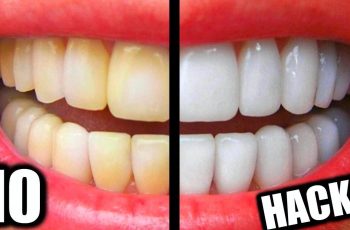
Can I use Azelaic Acid and Glycolic Acid Together?
The popularity of acids in recent years has resulted in every skincare brand including them into at least one of their popular products. The only downside is the fact that these acids are highly effective, with active levels of the ingredients used in various formulations. This is great for giving you impressive and noticeable results, but there is the risk of overdoing it. Yes, you can have a little too much of a good thing and when layered or used incorrectly, these potent skin heroes can leave the skin barrier weakened, irritated, severely dry with flare ups of redness.
Before we get started, let’s quickly recap about what exactly azelaic acid and glycolic acid can do for the skin.
What is azelaic acid good for?
Derived from grains such as barely, wheat and rye, azelaic acid isn’t actually a member of the AHA family, but instead is a medication named dicarboxylic acid. It is often used to treat areas of concern, such as rosacea and acne due to the fact it is able to reduce swelling and redness to the skin. It is also able to combat any bacteria on the skin surface that can lead to the pores becoming clogged resulting in breakouts, leaving you with skin clarity.
What is glycolic acid good for?
One of the most popular and used acids in the AHA, glycolic acid is derived from sugar cane and can work on the outer surface of the skin. When applied it is able to slough away the build-up of dead skin cells that often sit on the outer surface and develop into a number of concerns, from fine lines becoming more prominent, frequent breakouts and lack lustre complexion.
So now you have a better understanding of how each of these ingredients work, let’s now investigate further and see whether you can use azelaic acid and glycolic acid together.
Can glycolic and azelaic acid be used together?
Yes, it is considered perfectly safe to use azelaic acid and glycolic acid together. Using both acids in your daily routine is an easy change to make for a huge impact to your skin.
Many medical and skincare experts believe that because azelaic acid is so easily tolerated by almost all skin types, including the mildly sensitive. Having said that, you may find it difficult to find azelaic acid in over-the-counter formulas making this skincare ingredient quite unique in its own way. Gentle enough for those with sensitivity but not potent enough to remain as a prescribed ingredient.
It is important to remember that both these acids work at exfoliating the skin which is why it is vital you apply sunscreen on a daily basis, yes even on days its cloudy.
What can you not mix with azelaic acid?
Azelaic acid is considered a skin ingredient that can be introduced into your routine easily and can be teamed with other acids effectively. This however doesn’t mean there are some ingredients that should be avoided. It is recommended that when it comes to layering azelaic acid with salicylic acid for example you must consult with a doctor or dermatologist to ensure your skin can tolerate using them together. This will avoid the skin becoming irritated and dry with signs of damage caused to the protective barrier from overstimulating to the skin.
Can you use glycolic acid with other acids?
Yes, you can but with caution, it is easy to over exfoliate the skin without you really realising. Glycolic acid is one of the most potent AHAs making it a great addition to anyone’s daily skincare routine, providing your skin will tolerate it of course. As for other acids, such as lactic and malic it is really a case of alternating which formulations or time you use glycolic acid and other acids together.
Many of those with a combination to oily skin type will often find teaming salicylic and glycolic acid together will result in clear, glowing skin. This, however, is not the case with everyone so performing a patch test of any new ingredients or products for 24 hours before applying it over the face is important to avoid unwanted skin reactions.
What products should not be used with glycolic acid?
You should avoid layering vitamin C with glycolic acid. You’ll find that vitamin C is often considered unstable and is difficult to layer with other ingredients. This is often the result of outdated research describing vitamin C as a highly unstable skin ingredient making it highly reactive. This is because the pH levels of both glycolic acid and vitamin C are low meaning, they are both very acidic and can easily cause an imbalance of the skin surface. This imbalance will lead to skin irritation and other concerns such as dryness and flushing of the skin surface.
If you are wanting to know more about how to vitamin C, check out dedicated blog post about what not to mix with vitamin C.
Can I use azelaic acid every day?
Yes, you can use azelaic acid every day, in fact you can use it twice a day in your daily skincare routine. Often formulated into several different skincare products you can tailor your regime to suit your skin and the concerns you are wanting to target. What I mean by this is if you have a more sensitive skin type you can opt for a face cleanser as this is rinsed from the skin. For combination or oily skin types you can go for a more potent product such as a serum.
Can I use glycolic acid every day?
You can indeed! Just the same as azelaic acid you can use it twice a day. If you wanted my suggestion, I would choose an exfoliating toner enriched in glycolic acid. This is because the formula of the toners enabling the skin to be exfoliated without the ingredient remaining on the skin for too long resulting in irritation.
There you have a little more information about how to use azelaic acid and glycolic acid together, don’t forget you can come and follow us on Instagram if you have any questions.
DQH Can I use salicylic acid first and then vitamin C?
It’s easy to create a skincare routine, but knowing how to use it is another thing entirely. In most cases, if you’re not getting the desired skin results, it could be due to the layering of conflicting ingredients. So, is it possible that salicylic acid and vitamin C are such ingredients? Or are these active ingredients the duo that’s been missing from your skincare routine? If you want answers, stick around because today we are going to explain the benefits of salicylic acid and vitamin C and how they can be used in your daily life.
What are the benefits of salicylic acid for skin?
Salicylic acid is one of the most commonly used beta hydroxy acids and is favored by many people with oily, acne-prone skin. This acid is derived from willow bark, and unlike its water-soluble relatives (called alpha-hydroxy acids), salicylic acid is oil-soluble, which means it can penetrate deeper into the lower layers of the skin. Once it reaches the lower layers, it can help unclog pores of excess sebum, dirt, bacteria, debris, and impurities. This results in clearer skin tones and greater definition.
Not only does salicylic acid benefit the underlying layers, but the outer surface of the skin benefits as well. When applied to the skin, salicylic acid removes the buildup of dead skin cells. This is accomplished by breaking the bonds that hold dead cells to the surface. Over time, this can cause the complexion to look dull and prone to acne, blackheads, and other blemishes.
If you’d like to learn more about salicylic acid and how it can improve your skin, check out this dedicated blog post from a beauty insider.
What are the benefits of vitamin C for skin?
Vitamin C is considered one of the most powerful antioxidants, which means it is very effective at fighting free radicals and preventing them from causing further skin damage. Examples of free radicals include pollution, central heating, UV rays and harsh climate. They attack proteins, fats and cell membranes as soon as they come into contact with the skin, causing signs of premature aging such as fine lines and wrinkles as well as hyperpigmentation, flaky patches of skin and loss of elasticity.
Many people usually prefer to use vitamin C in their morning routine as this ingredient gives the complexion a radiant glow. You’ll also find that vitamin C can target areas of hyperpigmentation, plumping the skin and reducing the appearance of fine lines and wrinkles.
The thing about vitamin C is that there are a lot of outdated studies going back to the 1950s that describe vitamin C as an unstable skin component. Thanks to improvements in modern technology, this is no longer the case as all products now contain a stable form of vitamin C.
Visit The Beauty Insider to learn more about vitamin C. So please check out our blog post.
Can I use salicylic acid first and then vitamin C?
Yes, you absolutely can. In fact, it’s thought that using salicylic acid before using vitamin C ensures it penetrates faster and works faster.
This is an efficient way to utilize two power sources, and the reason has to do with pH. For example, the skin’s natural pH is about 4.7, making it slightly acidic. Salicylic acid and vitamin C are also both acidic, and you’ll find that vitamin C is absorbed quickly into the skin. Therefore, using salicylic acid beforehand can increase the acidity of the skin and allow vitamin C to penetrate into the skin faster.
While this is considered an effective way to combine two powerful ingredients, you need to be aware of your skin type and how it reacts to certain active ingredients. Even people with perfect, normal skin can experience skin sensitivity and irritation. Therefore, always consult a doctor or dermatologist before using any new products on your skin.
It’s also important to follow skin application rules. In this case, you need to use the product correctly to ensure you get the best results for your skin. If you’re not sure what I mean, the basic rule for skin is to start with the thinnest consistency and work your way up to the thickest consistency. This prevents a barrier from forming on the surface, preventing other active ingredients from penetrating the skin.
Can I use salicylic acid at night and vitamin C in the morning?
Yes, absolutely, this is considered the most effective way to get returns without any adverse side effects. This is because there is enough time between applications to ensure that the skin’s pH levels return to balance.
You’ll also find that Vitamin C is rich in antioxidants and is perfect for use in the morning to ensure your skin is protected and looking its healthiest. Due to the small size of salicylic acid molecules, it is an acid that is able to reach the deepest parts of the skin. While this is effective at keeping skin clear, it also increases the risk of irritation and photosensitivity. Therefore, many people prefer to use powerful BHAs in their evening routine without exposure to UV rays, pollution, or harsh weather.
Warning: If you avoid using sunscreen every day, none of these ingredients will do what your skin needs. The combination of chemical peels and powerful ingredients increases the risk of further damage to the skin’s surface. Use SPF 50 every day to keep your skin protected and your lipid barrier healthy, even on cloudy days, keeping your skin in top condition.


